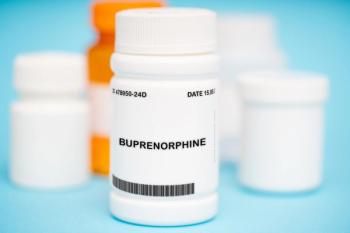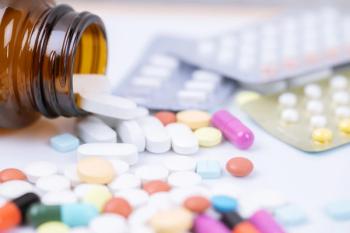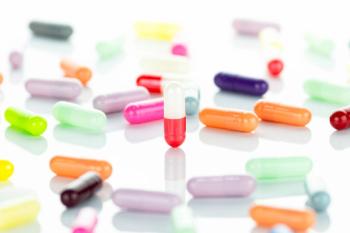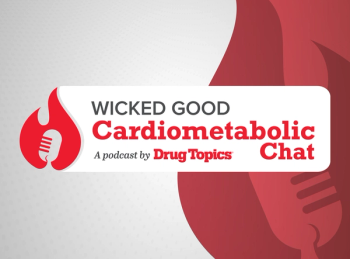
Dapagliflozin Improves Health Outcomes for Adolescents With Type 1 Diabetes
The drug could also reduce chronic kidney disease when combined with insulin therapy.
In a clinical trial (
"Our findings showed that adolescents who received this combination therapy were able to improve many symptoms typically associated with insulin-managed type one diabetes,” Farid Mahmud, MD, FRCPC, physician at The Hospital for Sick Children, said in a news release.1 “This could inform a new early intervention strategy for the growing population of teenagers with type 1 diabetes.”
T1D is an autoimmune condition in which the pancreas cannot produce insulin, and early symptoms include feeling tired, yeast infection, increase in appetite, dry mouth, and unexplained weight loss, while advanced symptoms can include stomach aches, nausea, vomiting, drowsiness, and heavy and rapid breathing. According to The Hospital for Sick Children, 1 in 4 or 5 children will have diabetic ketoacidosis when first identified, especially in older children.2
Previous data showed similar results in adults, so the investigators focused specifically on adolescents because they are underrepresented in clinical trials. They said that hormonal changes, psychological developments, and shared responsibility are barriers to research for this age range.1
The study was a multicenter, double-blinded, randomized, placebo-controlled trial that evaluated the effects of treatment with dapagliflozin compared with the placebo for patients less than 19 years over a 16-week period. Investigators assessed renal mechanistic evaluations, including direct glomerular filtration rate (GFR). Patients received either dapagliflozin 5 mg or the placebo for 16 weeks. The primary end point included measured GFR, and secondary outcomes included glycated hemoglobin A1c, adverse events, diabetes ketoacidosis, hypoglycemic events, urinary and genitourinary tract infection, glycemic variability, weight, body mass index, and total daily insulin dose.3
There were 98 patients included in the study, with 53% being female. Investigators found that dapagliflozin reduced measured GFR by 8.8 ml min⁻¹ 1.73 m⁻² compared with the placebo. Further, patients with a higher baseline measured GFR had greater attenuation when treated with the drug; HbA1c decreased by 0.47%, and time in range increased by 9%, according to the study authors. Body weight also decreased by 2.8 kg.4
Adverse events were similar between the groups, with 1 mild case of diabetic ketoacidosis for the study drug group. Investigators concluded, “In youth with T1D, dapagliflozin as an adjunct-to-insulin treatment reduced mGFR, improved glycemic control, and was safe when combined with ketone testing and risk mitigation strategies.”4
“This is opening exciting new treatment opportunities for youth with type one diabetes,” Mahmud said.1 “We’re giving them options that are grounded in science and designed to help them thrive throughout their lives.”
READ MORE:
Ready to impress your pharmacy colleagues with the latest drug information, industry trends, and patient care tips? Sign up today for our
REFERENCES
1. Clinical trial for teens shows improved health outcomes for type 1 diabetes. News release. The Hospital For Sick Children. June 17, 2025. Accessed June 18, 2025. https://www.eurekalert.org/news-releases/1087863
2. SickKids. Type 1 diabetes. October 18, 2016. Accessed June 18, 2025. https://www.aboutkidshealth.ca/type-1-diabetes
3. Adolescent Type 1 Diabetes Treatment With SGLT2i for hyperglycEMia & hyPerfilTration Trial (ATTEMPT). ClinicalTrials.gov identification: NCT04333823. Updated November 21, 2024. Accessed June 18, 2025. https://clinicaltrials.gov/study/NCT04333823
4. Mahmud FH, Bjornstad P, Clarson C, et al. Adjunct-to-insulin therapy using SGLT2 inhibitors in youth with type 1 diabetes: a randomized controlled trial. Nat Med. Published online June 6, 2025. doi:10.1038/s41591-025-03723-6
Newsletter
Pharmacy practice is always changing. Stay ahead of the curve with the Drug Topics newsletter and get the latest drug information, industry trends, and patient care tips.

